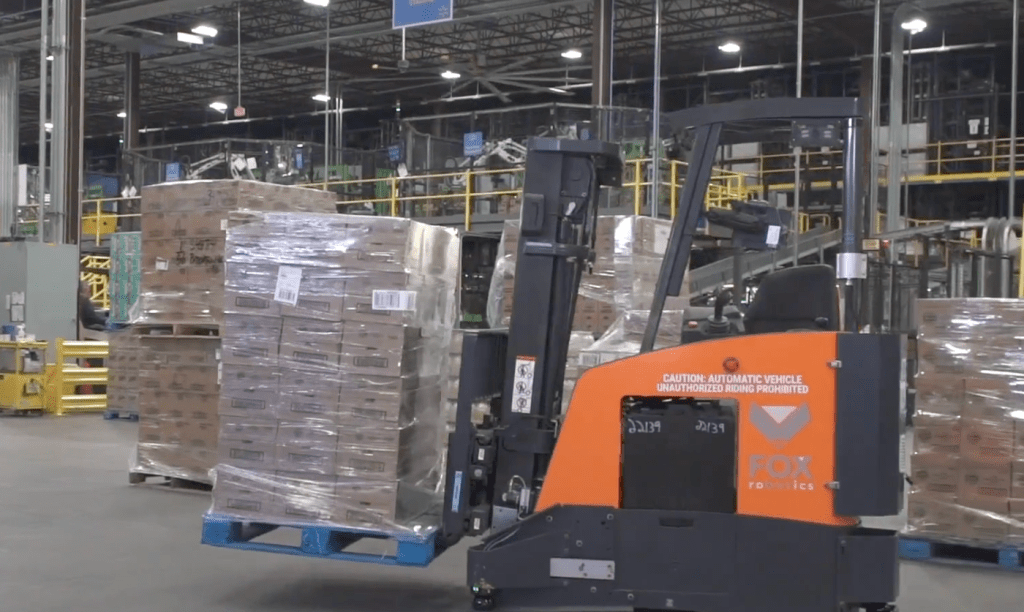Walmart appears to be sparing no expense in automating its warehouse operations.
Reuters reports that the retail giant plans to spend up to $200 million on self-driving forklifts to move pallets of goods around its distribution centers.
Walmart did not comment on the report, but noted that in April it announced it had deployed 19 autonomous forklifts made by Fox Robotics to four high-tech distribution centers. At the time, the company said it planned to expand the pilot based on the results of an evaluation of its effectiveness.
Reuters reports that Walmart plans to buy “possibly hundreds” of these autonomous forklifts from Fox Robotics in the future, with the Bentonville giant having already invested $25 million in the Austin-based startup.
After a 16-month proof of concept, Fox Robotics signed a multi-year program agreement with Walmart, which Reuters reported could phase in the rollout over several years, depending on retailers’ satisfaction with the forklifts, with Walmart able to opt out at any time.
Automation could bring huge benefits to Walmart as it expands technology across its logistics operations: To compete with the sprawling network Amazon has built, the company has already opened four “next-gen” distribution centers in Illinois, Indiana, Texas, and Pennsylvania, and plans to open a fifth automated warehouse in Stockton, California, by 2026.
Walmart claims that once complete, the facility will enable it to deliver “millions of items,” including third-party marketplace products, to three-quarters of U.S. households the next day or two. The fulfillment center is being built to double the storage capacity of a traditional Walmart warehouse and to process twice the number of customer orders per day.
Walmart is also working to improve delivery times as part of its fulfillment upgrades: In its May earnings call, the company said its U.S. unit delivered 4.4 billion items the same or next day over the past 12 months, with about 20% of those delivered within three hours.
Analysts at Jefferies recently estimated that the company’s automation and artificial intelligence efforts could help it add $20 billion to its earnings before interest and taxes by fiscal 2029.
Since the company began selling its FoxBot forklifts in 2021, they have automated more than 3 million pallet loading and unloading missions for customers across North America.
FoxBot operates through a proprietary AI and machine learning system that acts as the robot’s “brain,” Fox Robotics says. The technology is built to enable each individual forklift to dynamically and autonomously make decisions about tasks such as detecting the location of pallets, stabilizing loads, and more carefully loading and unloading pallets to avoid product damage that commonly occurs with manual forklifts.
Maurice Gray, general manager of Walmart’s Brooksville, Florida, distribution center, said Foxbot’s autonomous forklifts complement an automated storage and retrieval system that catalogs and stores products and is designed to fully automate the warehouse’s loading docks.
Fox Robotics claims that one operator can manage up to six autonomous forklifts simultaneously, reducing labor costs by 40 percent.
The Fox Robotics partnership isn’t the only significant deal Walmart has devised to achieve its automation goals.
Walmart invested in another robotics partner, Symbotic, in 2022, and the two companies plan to bring automation to all 42 of Walmart’s regional distribution centers. Walmart held more than 13% of Symbotic as of a securities filing in January.
When the deal was first awarded, Walmart estimated that renovating all 42 facilities would take a minimum of eight years, with a goal of completion by 2030.
Symbotic’s system features mobile robots that can move inventory at speeds up to 25 miles per hour, robotic arms that pack and unpack items, and vision-enabled technology to streamline the order fulfillment process. The system handles pallets and sorts products into different storage structures, each of which can handle 1,700 cases per hour. The system aims to increase storage density, increase available SKUs, reduce product damage, and improve throughput and speed.
Both the Symbotic and Fox Robotic agreements are exclusive, restricting Walmart’s competitors from using the technology.

